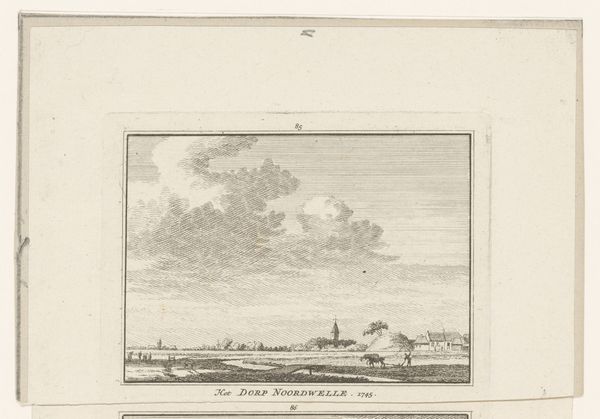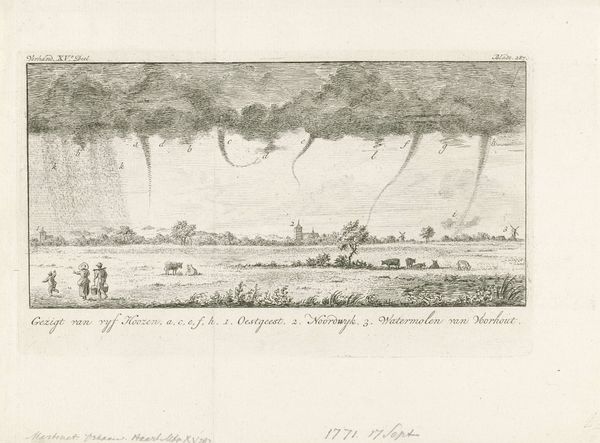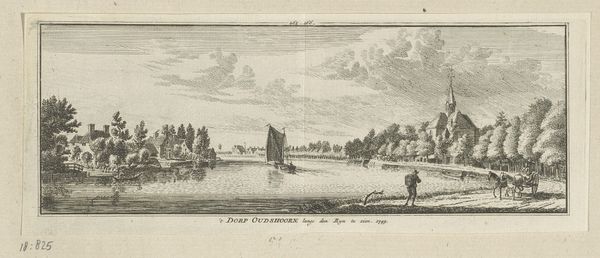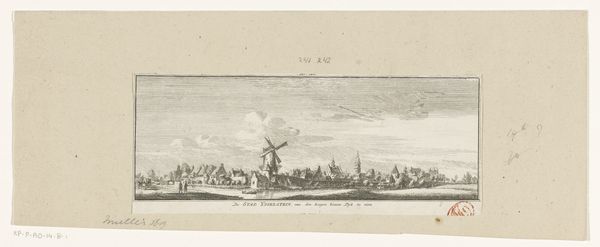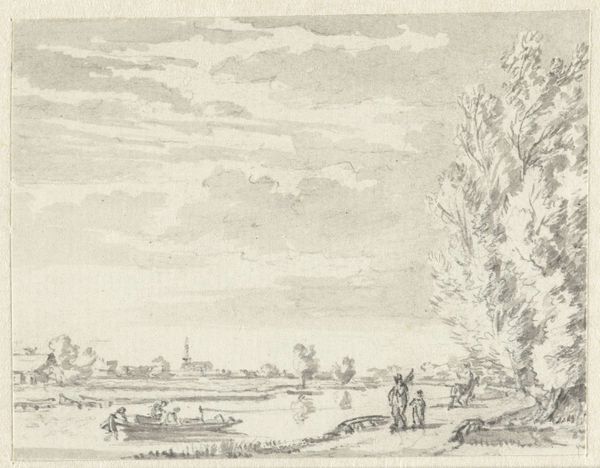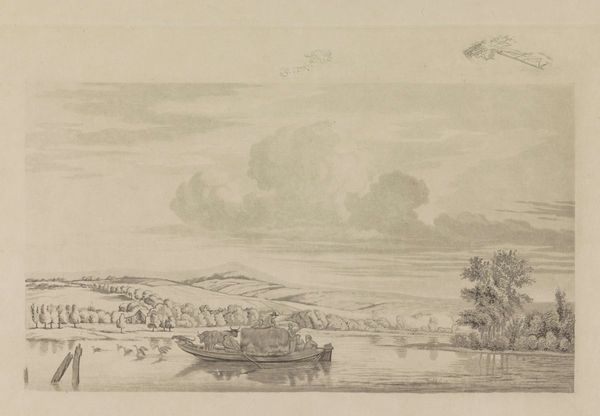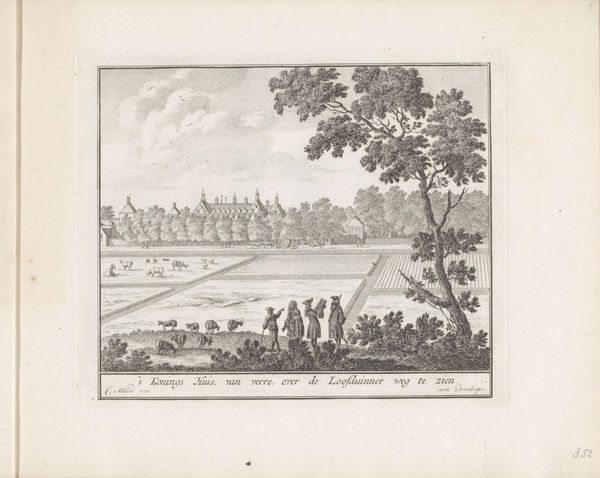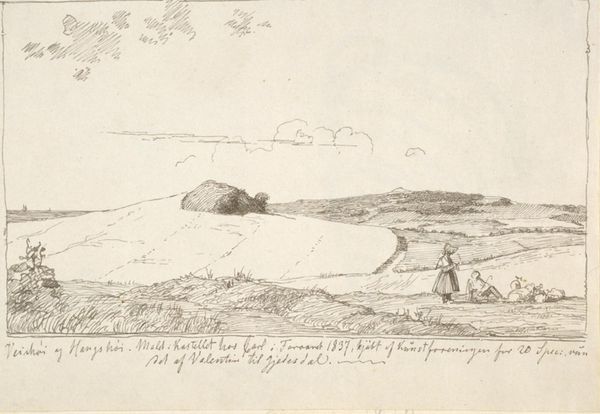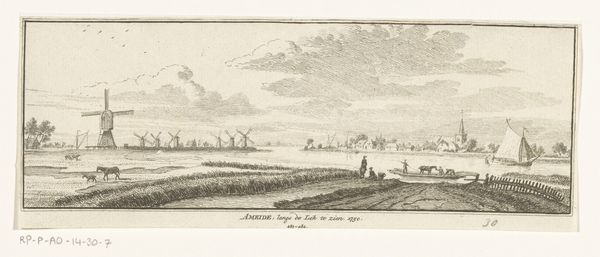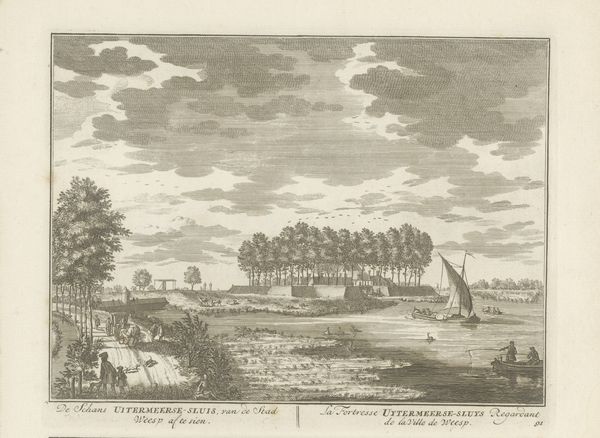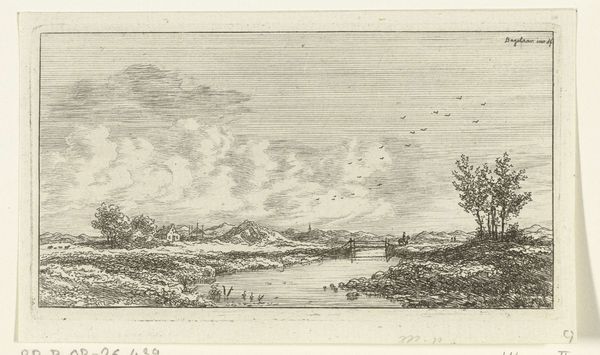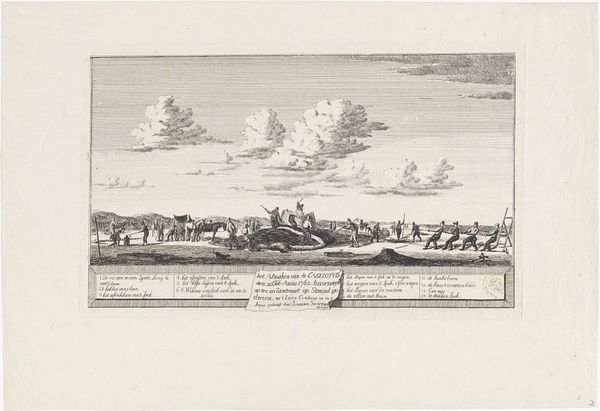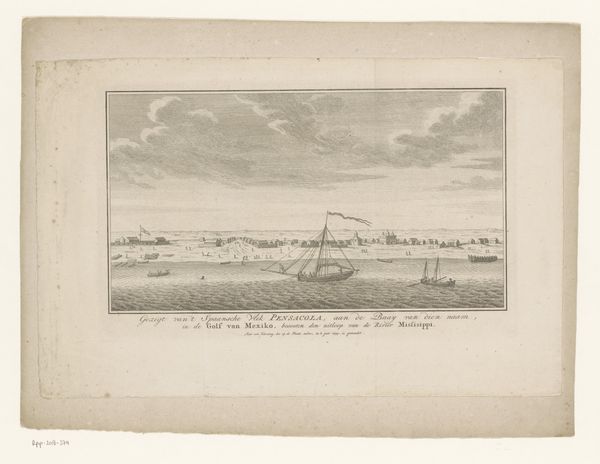
print, engraving
#
dutch-golden-age
# print
#
landscape
#
romanticism
#
engraving
#
realism
Dimensions: height 264 mm, width 361 mm
Copyright: Rijks Museum: Open Domain
Curator: Jan Heinis te Zaandijk's print, titled “Dijkdoorbraak bj Wijdewormer, 1825," presents us with a moment of devastation captured in engraving. Created in 1825, the work depicts the aftermath of a dike breach in Wijdewormer. Editor: The somber tone is unmistakable. It's spare, yet emotionally laden. The artist really emphasizes that massive sky... those threatening clouds almost overpower the delicate lines depicting the flooded landscape below. Curator: The stark realism here is striking. We must consider the context of 19th-century Holland; these breaches were a constant threat. It’s not just a pretty picture; it's a socio-political record, speaking to a community vulnerable to the forces of nature. Editor: Precisely! It speaks to power dynamics, doesn't it? The land is something they’ve labored to control, only to be reminded of their limitations. Look at the way people are clustered on the remaining banks – observing or waiting; powerless figures negotiating the impact of that trauma. Curator: The composition itself plays with the idea of control. The horizon line sits quite low, amplifying the sense of an expansive, almost overwhelming environment pressing down on the survivors. Editor: And the detail. Consider what's missing from those communities on the banks, likely devastated due to social and financial consequences. How does this moment shape their identity and resilience in the face of these adversities? Curator: Absolutely. Art like this serves as a vital link to our past, providing insight into how communities coped with ecological disasters and demonstrating how these events influenced social structures and government policies. Editor: It invites reflection on how historical vulnerabilities resonate in our own era. From class issues to social disparities and climate challenges, it’s more crucial than ever that we consider our human impact, social responsibility, and political landscapes reflected across these past, present, and future histories. Curator: Ultimately, this engraving encourages us to reconsider our relationship with nature. It offers an unvarnished view of the past. Editor: And to critically engage with the power dynamics that continue to define the landscapes of our future.
Comments
No comments
Be the first to comment and join the conversation on the ultimate creative platform.
